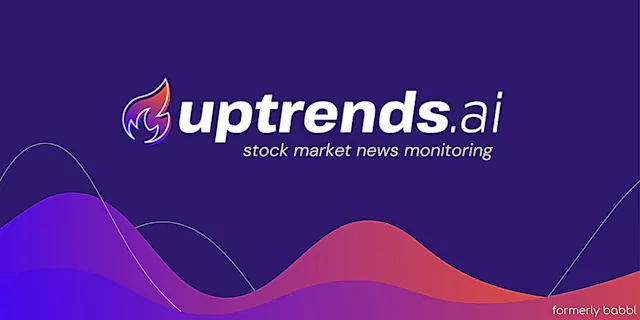Market coverage is one of the most crucial factors to take into consideration when looking at AI-based trading platforms. This determines how many assets and markets are accessible. A platform that has extensive market coverage will allow you to diversify your portfolio, look for global opportunities, and adapt to various trading strategies. These are the top 10 tips for assessing the market coverage of these platforms:
1. Evaluate Supported Asset Classes
Stocks: Make sure that the platform has stocks from all the major stock exchanges, including NYSE, NASDAQ and LSE.
ETFs: Make sure the platform supports a wide variety of ETFs that offer a wide exposure to sectors, regions or themes.
Options and futures: Verify if the platform covers derivatives like options, futures, and other leveraged instruments.
Forex and commodities: Check whether the platform is compatible with forex pairs, precious-metals, agricultural products, energy commodities, and other commodities.
Cryptocurrencies. Verify if the currency supports all major cryptocurrencies and altcoins (e.g. Bitcoin, Ethereum).
2. Check the Geographic Coverage
Global markets: Make sure the platform is inclusive of major global markets such as North America, Europe and Asia-Pacific.
Regional focus Make sure that the platform is specialized in certain regions or markets which align with your trading interest.
Local exchanges: Check that your platform supports local and regional exchanges that match your needs or your business plan.
3. Assessment Real-time vs. Delayed Data
Real-time information - Make sure your platform is able to provide live market data that can assist you in making timely decisions, especially for active traders.
Delayed data: Discover if you can get delayed data for no cost, or at a discounted cost. This could be sufficient for investors who are looking to invest long-term.
Data latency. Verify whether the platform minimizes delays for real-time information feeds, especially when it comes to high-frequency trading.
4. Assess Historical Data Availability
The depth of the historical data: Ensure the platform offers extensive historical data (e.g. 10, 10+ years) for backtesting and analysis.
Granularity: Find out if the data includes daily, intraday, weekly, and monthly the granularity.
Corporate actions: Find out if the historical data include stock splits and dividends.
5. Verify the market depth and order book information
Platform should provide Level 2 data (order-book depth) to improve price discovery and execution.
Verify that your platform is showing real-time price spreads.
Volume data: Verify that the platform offers detailed volume data in order to study market liquidity.
6. Assess Coverage to determine Indices and Sectors
Major indices: Ensure the platform supports major indexes (e.g., S&P 500, NASDAQ 100, FTSE 100) for benchmarking purposes and index-based strategies.
Data specific to a sector to provide targeted analysis, make sure the platform has data specific to a specific industry (e.g. technology, healthcare, or energy).
Custom indices. Determine if your platform permits you to create and monitor custom indexes based on the criteria that you specify.
7. Evaluation of the integration with News and Sentiment data
News feeds : Ensure that you use a platform that incorporates live news feeds, preferably from reliable media sources (e.g. Bloomberg and Reuters), for the most significant market occasions.
Check the sentiment analysis tool on the platform based on data from news, social media or other sources.
Strategies based on events (e.g. earnings announcements or economic reports): Check if your platform allows trading strategies that rely on events.
8. Verify Multi-Market Trading Capability
Cross-market trading : Ensure that the platform allows trading on different asset classes, markets and exchanges through one interface.
Conversion of currencies: Find out if the platform offers multi-currency and automated conversion of currencies to facilitate international trade.
Support for time zones: Find out whether the platform supports trading in different time zones that are used for trading on global markets.
9. Evaluation of Alternative Data Sources
Alternative data: For unique insights, verify that your platform utilizes alternative data (e.g. satellite imagery, web traffic or credit card transactions).
ESG data: Verify whether the platform has environmental social, governance, and (ESG) information to support socially responsible investment.
Macroeconomic Data: Make sure that the platform has macroeconomic indicators such as inflation, GDP and interest rates.
Review Market Reputation and User Reviews
User reviews: Read user feedback in order to determine the platform's market coverage as well as its reliability and usability.
Check for the platform's industry reputation. This includes awards and acknowledgement from experts in the area.
Case studies and testimonials These will demonstrate the performance of the platform in particular market segments or asset classes.
Bonus Tips:
Trial period: Take advantage of an unpaid trial or demo to evaluate the market coverage and data quality.
API access: Check to see whether the API of the platform supports customized analysis with market data.
Support for customers: Ensure that the platform has assistance for any market-related questions or issues with data.
Following these tips can assist you in assessing the market coverage of AI software for predicting and analyzing stocks. You will be able choose one that gives you access to markets and data to ensure profitable trading. You can broaden your portfolio and profit from new opportunities using a broad market coverage. See the best top article for stock ai for more tips including trading chart ai, best ai trading software, ai trading app, investment ai, canadian ai stocks, ai investing app, free ai tool for stock market india, invest ai, ai invest, incite and more.

Top 10 Tips For Looking At The Reviews And Reputation Of Ai-Based Trading Platforms
To ensure trustworthiness, reliability and effectiveness, it is crucial to examine the reputation and review of AI-driven prediction and trading platforms. Here are the top 10 ways to evaluate their reputation and reviews:
1. Check Independent Review Platforms
Read reviews of reliable platforms like G2, copyright, and Capterra.
The reason: Independent platforms are able to give real-time feedback from users.
2. Examine case studies and user reviews
Visit the official website of the platform, or other sites to view user reviews.
Why: These metrics provide insight into the real-world performances and satisfaction of users.
3. Examine industry recognition and experts' opinions
Tips. Find out if the platform is approved or reviewed by experts in the field, financial analysts, reputable publications or other publications.
Expert endorsements lend credibility to the claims that are made by the platform.
4. Social Media Sentiment
Tip: Monitor social media platforms like Twitter, LinkedIn or Reddit for comments and sentiments from users.
Why: Social media provides unverified opinions and information about the status of the platform.
5. Verify that you are in compliance with the legal requirements
Tip: Verify that the platform you use is compliant with the laws on data privacy and financial regulations.
What's the reason? Compliance assures the platform operates legally and ethically.
6. Find out if performance metrics are transparent. measures
TIP: Determine if the platform offers transparent performance metrics (e.g., rates of accuracy, ROI, backtesting results).
What's the reason? Transparency builds trust and helps users evaluate the effectiveness of the platform.
7. Take into account the quality of customer service.
Check out reviews of the platform to get information about its customer support.
Why: A reliable support system is essential for resolving problems and ensuring that users have a positive experience.
8. Red Flags to Look for in reviews
Tip Look for repeated complaints. They could be due to poor performance, hidden charges or a lack of updates.
Why: Consistent negative feedback suggests that there are issues with the platform.
9. Review user engagement and community
Tip: Check to see if there is an active community of users using the platform (e.g. Discord groups, forums) and whether they communicate with their users on a regular basis.
Why: A strong and active community demonstrates that there is a high degree of satisfaction among users.
10. Find out the track record of the company.
Explore the past performance of the company performance, its management, as well as the performance of the sector of financial technology.
What's the reason? A documented track record increases confidence in the reliability of the platform and knowledge.
Compare Multiple Platforms
Compare the ratings and reputations of various platforms to identify which one is the most appropriate for your requirements.
Follow these tips to assess the credibility, reviews, and ratings of AI stock trading and prediction platforms. See the most popular ai trading platform for more info including ai stock market, ai invest, stock market software, trader ai intal, trading chart ai, using ai to trade stocks, ai stock trading, ai invest, ai trade, using ai to trade stocks and more.
